According to TASS, on the June afternoon, on the 25th of 2018, its first outing at sea was made by a new large landing ship of the project 11711 - "Ivan Gren". The vessel left the naval base Baltiysk for the first-ever sea trials. According to information sources, the ship during the test, which should last several days, must pass several hundred miles to debug the working units of the propulsion and steering system.
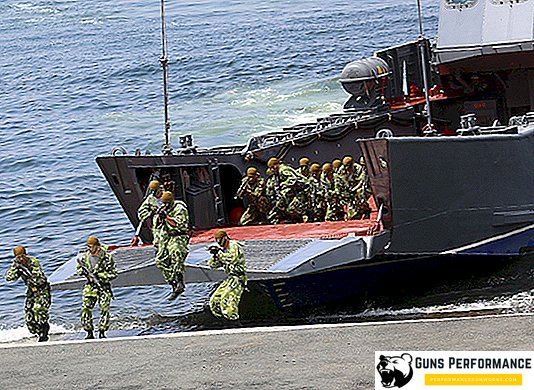
The large landing ship should be the first in the Russian Navy to be a full-fledged combat vessel capable of carrying out the whole range of landing operations at sea. The complicated foreign policy situation in the world today requires the Russian naval command to hurry with the commissioning of such ships. France’s refusal to transfer two Mistral-type amphibious ships to the Russian fleet was the impetus for speeding up the construction of the BDK project 11711. The ship, laid down in 2004, stood for a long time on the stocks of the Kaliningrad shipbuilding plant Yantar without movement. The insufficient financing of the project and the uncertainty that reigned in the highest military and political circles of the country about the feasibility of building ships of this class had an effect. Today it seems that the situation has moved off the ground and the national fleet will finally begin to receive the long-awaited ships.
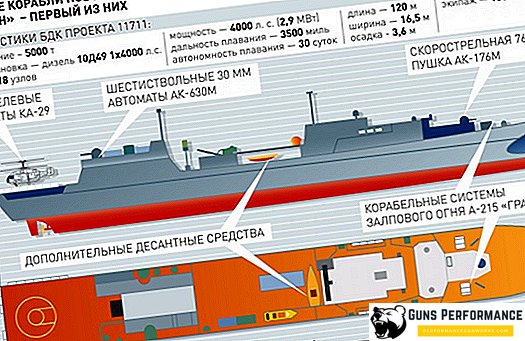
The story of the birth of the project 11711 - Ivan Gren
The increasing role of amphibious operations in the modern strategy of strengthening the military presence served as a signal to begin the development of project documentation for new warships. The marines in the structure of the navy is one of the most combat-ready tools that can quickly and effectively solve tactical tasks. The combat equipment and the high power of the Marine Corps units required an increase in the fleet’s transport capabilities. The landing craft of the old Soviet construction available did not fully meet the objectives set. The fleet needed a ship that would become not only a means of delivering a landing force, but would also perform the functions of a headquarters hub - a mobile military technical base.
The technical task for the development of the project was obtained in 1998 by the Nevskoye PKB, located in St. Petersburg. This company already had experience in designing ships of this class and could present the existing developments in this regard. Initially, the technical task was based on the idea of creating a landing ship with a small displacement, capable of carrying out amphibious transportation in the internal waters. It was assumed and the main region of navigation of the new vessel. This was supposed to be the waters of the Baltic and Black Seas. In the future, the concept of creating a ship with a small displacement has been revised. The Higher Naval Command decided to focus on the construction of a large landing craft of increased displacement, capable of solving a wide range of operational-tactical tasks at any point of the world’s ocean.
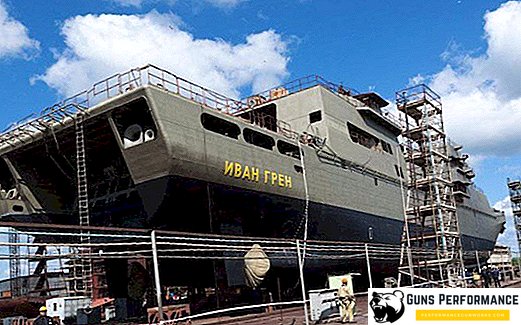
It should be noted that during the development of the project changes to the main idea were made three times. The result of almost 6 years of engineering development and research was the appearance of a completely different class of vessel - the BDK project 11711. The design displacement was increased to 5,000 tons. The combat capabilities of the ship increased significantly. It was assumed that the ship should be free to accommodate a reinforced Marine unit with the entire set of infantry and heavy weapons. To land assault groups, the ship must be equipped with two helicopters and other means of delivery, including sea pontoons and lifting and unloading mechanisms.
Kaliningrad Shipyard Yantar, the enterprise which today is one of the main shipyards involved in the construction of ocean-class fighting ships, has been chosen as the construction site.
Construction progress BDK Ivan Gren new generation
The lead ship of the project 11711 laid the curtain of 2004, December 24. Initially, the project envisaged the subsequent construction of five serial vessels of this class. The ship was named in honor of the famous Soviet vice-admiral and scientific theorist in the field of naval artillery I.I. Grenna. Despite the fact that the project already carried a number of significant changes, during the construction of the ship, designers and shipbuilders made up to two dozen more changes. New BDK received in the NATO classification code "Ivan Gren".
The subsequent construction of the ship was accompanied by a series of uncoordinated actions between the contractor and the customer, as well as in terms of financing. Construction was delayed for many years. The state defense order was redrawn several times, postponing the ship’s launch dates. Having readiness for the main shipboard systems and the hull by 70%, the Ivan Gren BDK was launched only in the spring of 2012. It should be noted that in the course of how the technical and economic problems were solved with the construction of the lead ship, in 2010 the design work of the second ship of the same type began. The construction of the first serial ship was planned to begin no earlier than 2014, only when the head ship passes all the stages of refinement and ongoing modernization.
The decision on the serial production and the number of vessels of this class will be made based on the results of tests of the lead ship.
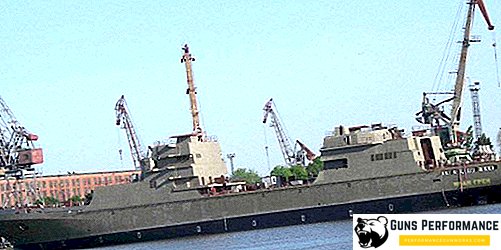
The real construction progress of the warship caused a lot of misconceptions, both from the naval leadership and among military experts. The Great Landing Ship "Ivan Gren" experienced the financial crisis that affected the shipbuilding industry and the inability of the domestic defense industry to supply the necessary equipment and weapons.
According to the management of the Kaliningrad CVD "Yantar", financing was sufficiently begun only from the beginning of 2014. The result of numerous inspections of the state of the shipyard and compliance with construction plans are the renewal of the old contract for the construction of the vessel. The new document already carried in itself information about another, higher construction cost, more specific and acceptable deadlines for putting the object were established. According to a number of special sources, the contract value of the landing ship "Ivan Gren" in 2012 amounted to more than 5 billion rubles.
After the ship was launched, clear contours and directions for further work were outlined. Together with the hull works, the installation of the switchboard is being carried out, the installation of diesel generators is being carried out.
Related enterprises strongly set aside the pace of construction of the vessel. The main propulsion system DRRA3700 was supposed to put the St. Petersburg plant "Star", but according to the latest data, ready engines could arrive at the shipyard for subsequent installation on the ship only in 2012. The situation, which has moved off the deadlock, has provided ample ground for rumors that the lead ship will be the last and that subsequent serial production of ships of the same type is not planned.
The head BDK of the project 11711 "Ivan Gren" in May 2012 was wound up in the launch dock of the Kaliningrad shipyard. It was expected that at the end of 2013 or at the beginning of 2014 the ship would be handed over to the fleet.

The main features of the design BDK project 11711
The new ship has a hull length of 120 meters, a width of 16.6 meters. At the same time, the draft of the ship is only 3.6 m. The full displacement of the vessel varies within 5 thousand tons. The Big Amphibious Ship has a seaworthy hull shape and fast hull lines allowing to make long sea crossings and walk in stormy weather.
The power of a reverse-type diesel engine is 4000 hp, providing the ship with a cruising speed of 18 knots. The navigation range of the Ivan Gren BDK is 3,500 miles, which is quite enough for operational activities in the closed areas of the Baltic and Black Seas. The vessel had a crew of 100 sailors and officers and could autonomously be at sea for up to 30 days. For all the stated tactical and technical characteristics of the ship met modern requirements, however, during the construction process, there was an urgent need to effectively replace imported components, electronic equipment and individual components of the power plant.
There were no particular problems with the weapons system. Later on, it was intended to install only artillery systems on the ship. The main caliber was represented by automatic installations AK-176 caliber 76 mm. The airborne defense of the Large Amphibious Ship was provided with two AK-630M anti-aircraft guns with 30-mm guns.
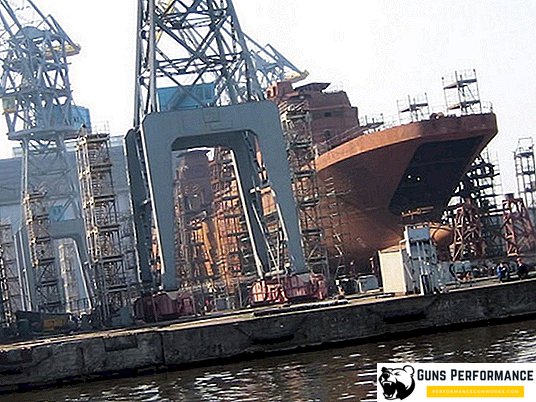
The maritime version of the Grad-M rocket launcher A-215 rocket launcher could provide fire support to the landed subunits. Aerial reconnaissance in the area of the ship’s operation was provided by two Ka-26 helicopters.
Landing function and cargo capacity
We should also dwell on the technical features of the landing craft of this project. Units intended for subsequent transportation and landing are placed on a closed tank deck. The landing ship of the project 11711 could accommodate up to 300 personnel of the marine infantry unit in its depths. A spacious and spacious ship hold was able to receive 30 tanks or the same amount of other armored vehicles. The internal payload volume of the vessel’s cargo holds was designed for loading twenty-twenty-pound cargo containers.
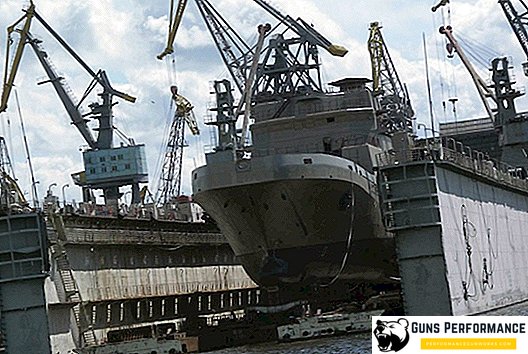
The new ship had two methods of loading and unloading of landed cargo. In contrast to the unloading of troops through the open ramp, traditionally used in the Soviet and Russian fleets, the Large Landing Ship could offer two loading / unloading options. The vessel could make loading and unloading of machinery through a ramp located in the forward part of the hull or using the port and its own lifting and loading mechanisms. For this purpose, there was a wing hatch in the upper deck of a warship. On the ship there was a technical possibility to make open access from above to the tank deck, ensuring good ventilation of the ship’s holds when the engines of armored vehicles are working. The capacity of its own crane is 16 tons. On the sides of the vessel there are also two boat lifting devices that allow you to quickly lower or lift aboard boats and landing craft.
The landing ship "Ivan Gren" had on equipment two large and one small motor boats.
New story with BDK project 11711
Having received quite acceptable results and the pace of construction of the lead ship, the Ministry of Defense of the Russian Federation decided to start building the second landing ship of the project 11711. The contract under the new State Defense Order was signed in the autumn of 2014. The new Large Landing Ship, still at the project stage, was named “Peter Morgunov” and was significantly different from the prototype. The Black Sea Fleet is planned to be based on the new BDK. It is not by chance that the name of the ship was given in honor of the hero of the defense of Sevastopol in 1941-42, General Peter Morgunov.
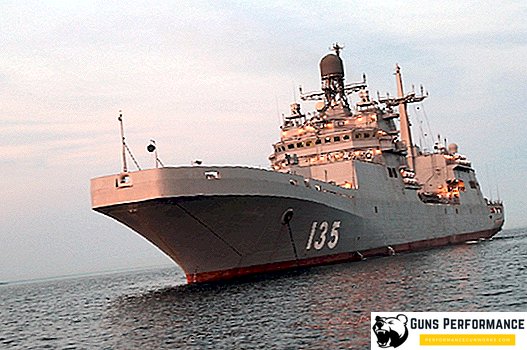
It was decided to conduct construction there, in the shipyards of the Baltic Yantar Baltic Shipyard, in Kaliningrad. In accordance with the state defense order, a new ship was planned to be launched in 2018 and transferred to the fleet over the next two years. Later, the estimated time of commissioning the ship moved again. The official laying of the vessel took place in June 2018. The ship "Peter Morgunov", received the serial number 01302, should enter the fleet no earlier than 2018.
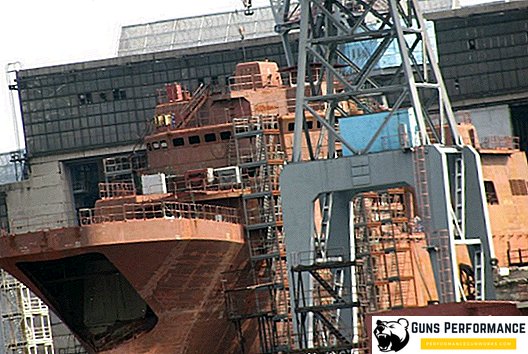
Today, on the stocks of the Yantar plant there is a formed ship hull, the main units, assemblies and communication systems are being loaded onto it. Two years after laying, the vessel is ready to be launched, where further work will take place.
The new ship is characterized by significant changes in comparison with the basic project. Despite the fact that the designers tried to leave the standard design unchanged, on the second ship they tried to take into account the test results of the lead ship.
Today, designers and shipbuilders have to comprehensively solve the tasks of import substitution. It is required to reduce to a minimum in the design of the ship the presence of components and parts of foreign production. Project 11711 is undergoing revision, taking into account new circumstances and requirements. During the construction of the lead ship, the shipbuilders relied mainly on domestic components and components, while the second ship relied on the use of foreign technologies. Today this issue is being resolved at a fast pace, despite the fact that certain difficulties constantly arise. At the moment there are various options for technical solutions by domestic enterprises. Build quality will already be identified during the launch and acceptance tests.
BDK Ivan Gren today
At present, the situation with the fate of the project 11711 Large Airborne Ships is less defined. The tests of the head BDK "Ivan Gren" are in full swing. The vessel checks the operation of all systems on the fly in various modes. The operation of the steering and navigation equipment is being checked. Sea trials are scheduled to be completed in September 2018, after which maintenance work will be carried out on the ship. The beginning of state tests is scheduled for autumn 2018, after which the ship is likely to enter service of the Baltic Fleet.
Comparison with foreign courts of this class in this case is incorrect. Despite the huge number of changes in the project, the Ivan Gren BDK and its younger counterpart are rather an intermediate class of ships, something in between a medium landing craft and a large landing craft such as a ship dock.
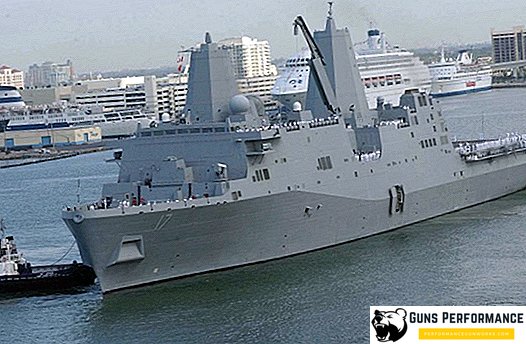
The situation with the construction of the second ship BDK "Peter Morgunov" suggests that the ship will be built and launched on time. The difficulties that arose as a result of the import substitution program questioned the further fate of the project 11711. According to some media reports, the Supreme Naval Leadership is inclined to believe that the construction of ships of this class will cease in the future. From the moment of laying up to the sea trials of the lead ship, more than 13 years have passed. During this time, the naval strategy of the state has changed somewhat, and today the fleet needs more powerful and universal landing craft capable of autonomously solving operational-tactical tasks.












